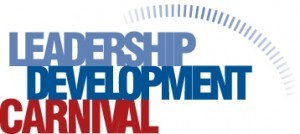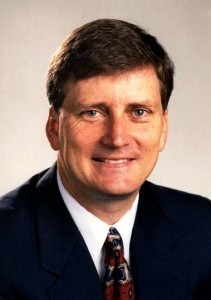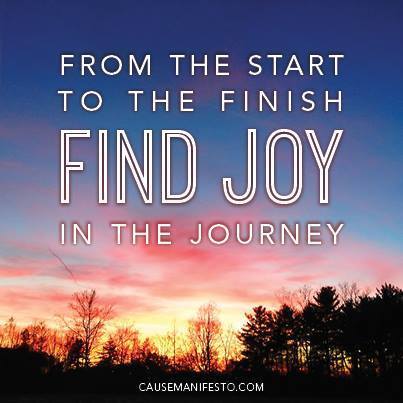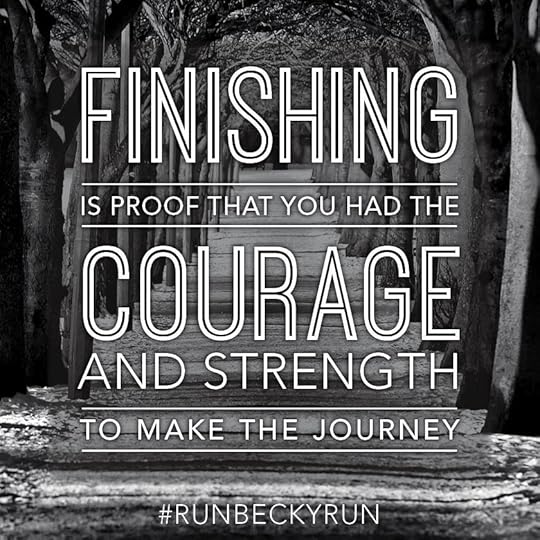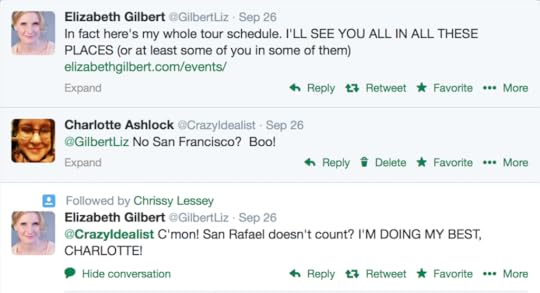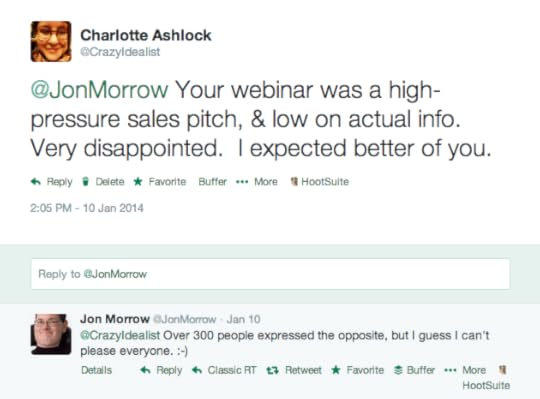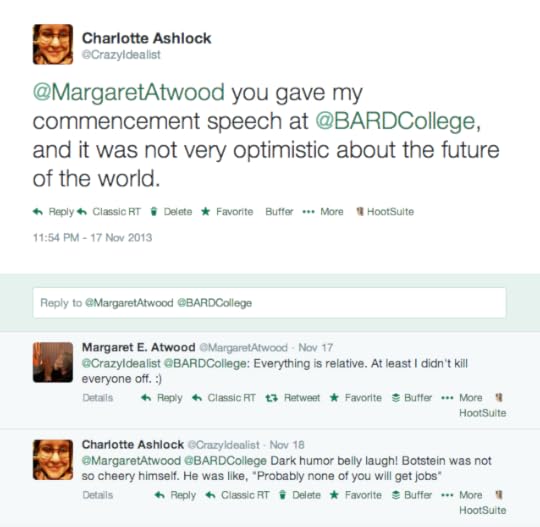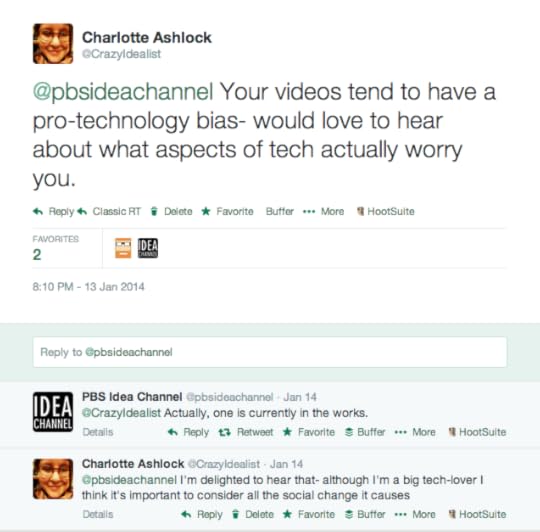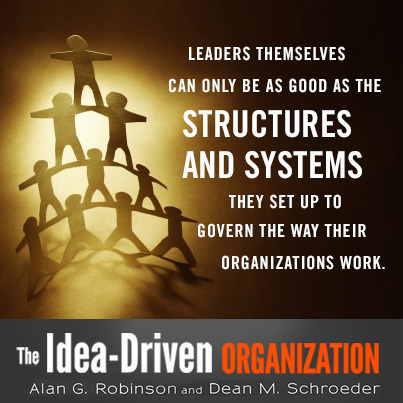Becky Robinson's Blog, page 77
May 5, 2014
May 2014 Leadership Development Carnival
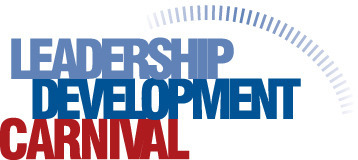
Five years ago, I started blogging about leadership on a blog called LeaderTalk. Many of the bloggers on today’s list supported my early efforts. In fact, Dan McCarthy, who generously offered us the opportunity to host this month’s carnival, was one of the first bloggers to give me a shout-out. It’s not a stretch to say that I would not be where I am without the support of many of the folks included in this carnival, people who welcomed me to this leadership blogging community. Thank you! You have made my life better. I am a better leader today because of you!
Today’s carnival features some seasoned leadership bloggers with some excellent post as well as some new voices in the space. I hope you’ll take the time to read settle in and learn from all these contributions and then share these posts (and the carnival) with your online communities.
Big thanks today to Carrie Koens, who has worked with me for two years here at Weaving Influence. She did all the heavy lifting on this post, curating the posts and links. We highly recommend that you follow these talented leaders (if you aren’t already) on Twitter and add them to a leadership list.
Anna Farmery (The Engaging Brand) is sharing a tip this month in Here’s An Easy Way To Become A Better Leader, “Leadership can be hard because we grow our busy-ness, yet our business growth doesn’t increase at the same rate. Here is a tip that I have used for the last few years…” Find her on Twitter @engagingbrand.
Annamarie Lang (Talent Management intelligence) shares What the Basketball Court Taught Me About Empowerment and says, “Empowering others wasn’t easy as a basketball coach—and it won’t be for leaders in organizations either—but when done well, there is the possibility of great things!”
Anne Perschel (Germane Insights) asks 3 Inspirational Leadership Types: Which One Are You? “As a leader, how do you inspire people to act, but how do you do that? Discover the three inspirational leadership types and learn which one you use best.” Follow her on Twitter @bizshrink.
Art Petty (Management Excellence) shares Just One Thing: Cultivate Your Project Leadership Skills. “Given the import of projects in our workplace today, it’s essential for all of us to cultivate the skills needed to cultivate high performance with groups called together for temporary and unique (projects) endeavors.” Excellent points! Follow Art on Twitter @artpetty.
Beth Miller (Executive Velocity) says, “Leaders can be crippled by their concern that sharing bad news will lead to panic amongst employees. A commitment to internal and external transparency, and the practice of sharing both the good and the bad, can prevent small problems from becoming full-blown crises.” You can find more in her post, Why You Can’t Be Trusted Unless You’re Transparent. Find her on Twitter @SrExecAdvisor.
Chery Gegelman (Simply Understanding Blog) shares, “This post contains a real example of a frontline employee that owned something way outside of his job title and made a lasting difference. (Yes – You really can lead change, no matter where you sit!) Who would you rather work with: People who choose to be a part of the solution or people who choose to be a part of the problem?” Keep reading: Ignoring It, Fussing about It, or Owning It. Follow Chery on Twitter @GianaConsulting.
Chip Bell (Chip Bell) recently posted The Pursuit of Significance in Mentoring on Careers in Government where he says, “Mentoring is not about the transmission of expertise or the conveyance of knowledge; it is about the fostering of insight—the light that goes on inside the mind of the protégé. Insight leads to understanding, not merely retention; wisdom, not rote competence.” Follow him on Twitter @ChipRBell.
Dan McCarthy (Great Leadership) discusses what sets a great leader apart in his submission, You Can be a Tough Leader and not be an S.O.B. . “They can be demanding, have high expectations, and push their teams to their upper limits. But they do it in a way that a way that makes people feel valued; that their ideas and work matters, and enables people to achieve more than they thought was possible.” Find him on Twitter @greatleadership.
Dana Theus (InPower Consulting) poses an interesting question to all leaders: “We often give advice to leaders, ‘Be bold!’ Why?” In Being Bold at Work, Dana shares her reason for encouraging others to BE BOLD. Follow her on Twitter @danatheus.
Erik Samdahl (i4CP) submitted a post on behalf of Cliff Stevenson entitled The Keys to Successful Business Strategy Execution. “Make strategy execution an organization-wide effort. Too often, the strategic plan is considered the exclusive purview of the C-suite.” Follow @i4cp.
Frank Sonnenberg (Frank Sonnenberg Online) offers a helpful Leadership Scorecard graphic for us this month. “What are the qualities of a great leader? How do you rate?” Lots of great links and information in this post. Follow Frank on Twitter @FSonnenberg.
Jeff Harmon (Jeff’s Blog) says Leaders Must Ask for Their People’s Fine China. “A willingness to trust is critical to a relationship in which your shared work can thrive. As you work to lead a person, team or organization, what you really want is for them to place the “fine china” of their life in your hands.” Follow him on Twitter @jeffdharmon74.
Jennifer V. Miller (The People Equation) gives this summary of her post: “Jennifer V. Miller recalls a watershed moment in her leadership journey when she discovered that her much-admired boss was capable of causing great disappointment.” Don’t miss reading about her experience in There is No Such Thing as an Ideal Leader. Find her on Twitter @JenniferVMiller.
Jesse Lyn Stoner (Seapoint Center) says, “An emergent, non-hierarchical view of leadership makes the most sense in today’s complex world. But emergent leadership without supporting practices will spiral into chaos. These 4 practices provide the vehicle that enables leaders to move forward smoothly.” See what 4 practices she suggests in The 4 Practices of Successful Flat Organizations. Follow on Twitter @JesseLynStoner.
Jill Malleck (Epiphany at Work) asks an interesting question this month: Do you pass the sniff test? “You may underestimate the long-term impact of failing the sniff test. Trust, once lost, is difficult to regain. Worse, you may not even know you’ve failed, losing your chance at recovery and adding to the level of cynicism on your team.” Follow Jill on Twitter @epiphanyatwork.
Jim Taggart (Changing Winds) has submitted Six Enablers to Building Organizational Change Adaptability. In it, he says, “One of the cornerstones of strong teamwork is interdependency among the team’s members. Without it, it’s impossible to have a team. Interdependency of effort is a necessary condition.” Indeed it is! Find Jim on Twitter @72keys.
Joel Garfinkle (Career Advancement Blog) shares 9 New Leader Essentials – Get Up & Running Fast! “If you have stepped into a new position, your leadership role needs to be up & running quickly in order to succeed. Here are essential qualities that will guide you in your new role.” Helpful advice for anyone at any level. Find him on Twitter @workcoach4you.
John Hunter (Curious Cat Management Improvement Blog) says, “What is beneficial is a management system that demonstrates how the organization maximizes the ability of people to contribute to continually improving the success of the organization.” Continue reading about this in Steve Jobs on Quality, Business and Joseph Juran. Follow John on Twitter @curiouscat_com.
Jon Mertz (Thin Difference) asks an interesting question in his post: “Do you prefer a tested or inspiring leader?” And his response: “A blend may be required. Whatever quadrant a leader falls within, the goal is to strengthen our leadership skills and prepare ourselves to lead in any situation.” Continue reading Tested Leader or Inspiring Leader: What Is the Right Blend? Follow him on Twitter @ThinDifference.
Julie Winkle Giulioni (Julie WG) has shared, How Well-Populated is Your Pipeline? She says that, “perhaps it’s time to evaluate leaders by the most crucial output for which they’re responsible: the quality of their followers.” Now there’s some food for thought! Follow her on Twitter @Julie_WG.
Kathy Cramer (Dr Kathy Cramer) says, “In order to inspire, leaders must be self-confident and optimistic. Your own emotion is what will move and touch listeners. They will feel what you feel.” Don’t miss Get Them Excited! 4 Best Practices for Enrolling Others. Follow Kathy on Twitter @DrKathyCramer.
Lisa Kohn (The Thoughtful Leaders™ Blog), presents 5 ways to take back your power. “Giving your power away is not a good feeling. But it’s a feeling you can work through and hopefully avoid for the future. Take back your power now.” Find Lisa on Twitter @ThoughtfulLdrs.
Mark Miller (Great Leaders Serve) says, “Hope, and the ability to generate it, is a big part of what we do as leaders. But the truth is, at some point, we must deliver. Hope without progress is unsustainable. It actually fades rather quickly.” Continue reading ONE WORD… HOPE. Follow Mark on Twitter @LeadersServe.
Mary Ila Ward (The Point Blog) shares The Key to Motivating Others: Make them want to be better by buying them bloomers. “You motivate other through demonstrating the actions you want to see take place. Not because you are trying to manipulate them into action, but because you care. People are first. You demonstrate this and your results are multiplied because they, in turn, take on the People First mindset as their own, turning to more and more action.” Follow her on Twitter @maryilaward.
Mary Jo Asmus (Aspire-CS) is Inspiring Team Vitality in her post today. “Can you imagine what it would be like if there were more positivity and vitality in your team? What would you see people doing and how might it impact your business? What can you do to lead your team to be more vital and energetic?” Follow Mary Jo on Twitter @mjasmus.
Meg Bear (Meg Bear’s Leadership Blog) has submitted her post, Get a plan to increase your confidence. “Studies are pointing to a confidence gap as a reason for a lack of equality for women in Senior Leadership. In this blog I attempt to provide practical suggestions on how to increase your confidence.” Find her on Twitter @megbear.
Michael Lee Stallard (Michael Lee Stallard) joins up with his post on 6 Needs to Thrive at Work. “Are you performing at the top of your game at work? Or are you struggling, losing interest, or so stressed that you’d just like to walk away?” I’m pretty sure we’ve all faced this situation as one time or another. Follow him on Twitter @michaelstallard.
Neal Burgis, Ph.D. (Practical Solutions) says, “In order to create breakthrough results, leaders and their organizations must use their critical thinking skills for questions that spark their innovation of thriving beyond where they are now.” Continue by Asking the Right Questions to Create Breakthrough Results. Find Neal on Twitter @exec_solutions.
Nick McCormick (Joe and Wanda on Management) shares his post, The “I’s” Don’t Have It. “If we remember that “it’s not all about us” we’ll be good leaders and we may live longer.“
Randy Conley (Leading with Trust) points out that, “just like computers, our approach to leadership can become bogged-down and less effective over time.” In this fun article, Randy shares how you can reboot your leadership style by using Ctrl+Alt+Delete – 3 Steps to Reboot Your Leadership Style. Find Randy on Twitter @RandyConley.
S. Chris Edmonds (Driving Results Through Culture) describes how great bosses make it easy for teams and members to perform well and behave well in Clear the Path. As Chris says, “don’t try to address all the hurdles – simply create a formal pathway to high performance and values alignment.” Follow him on Twitter @scedmonds.
Steve Roesler (All Things Workplace) explains that, “We live in a time where saying ‘yes’ seems like participative leadership. But saying ‘no’ leads to real trust.” Read more about how to Build Trust By Saying “No”. Follow Steve on Twitter @steveroesler.
Susan Mazza (Random Acts of Leadership) says, “There are a lot of things we take for granted, including our skills. There are also those talents and abilities that we take for granted, over-relying upon their presence, and it might just be costing us our effectiveness.” Find out more by reading What Skills and Abilities Are You Over-Relying On? Find Susan on Twitter @susanmazza.
Wally Bock (360 Degree Feedback Blog) is letting the cat out of the bag in Leadership Development at GE: It’s no secret. “Leadership development is something General Electric is famous for. They’ve been growing great leaders for over a century. [...] The secret is that there is no secret. Here are five things I think make the GE process produce the results everyone envies.” You won’t want to miss this post. Follow him on Twitter @wallybock.
May 2, 2014
Featured on Friday: Bob Thompson
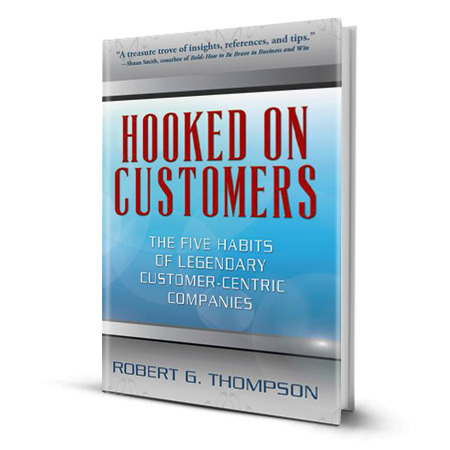
If we were chatting in real life and I asked about your worst customer service experience, I would bet that you could come up with at least one story to share. My “never again” list includes a major airline and a cell phone company. But it can go both ways, and I’ve also had some very pleasant experiences which I’m quick to share about through social media.
As we work with customers and clients, our goal is to provide the kind of service that we would like to receive – the kind of service we want people to talk about. If you’re involved in sales, leadership, management, or customer-centric work, you may already be familiar with CustomerThink.com and the man behind it. But… did you also know he was preparing to launch a book on the subject?
Meet Bob Thompson
Bob is founder and CEO of the research and publishing firm CustomerThink Corporation, and the editor-in-chief of CustomerThink.com, the world’s largest online community dedicated to helping business leaders develop and execute customer-centric business strategies. An author, keynote speaker and international authority on business management trends, he has been a thought leader in customer-centricity since 1998. Before starting his firm, Thompson held sales and technical leadership positions at IBM, where he advised companies on the strategic use of information technology to solve business problems and gain a competitive advantage.
Bob’s new book, Hooked on Customers, takes a fresh look at customer-centric business management, exploring what he has identified as the five key organizational habits that enable any company to execute its business strategy more effectively and, ultimately, to outperform its competitors.
Connect with Bob Online
Follow Bob on Twitter @Bob_Thompson, and find him on LinkedIn and Google+.
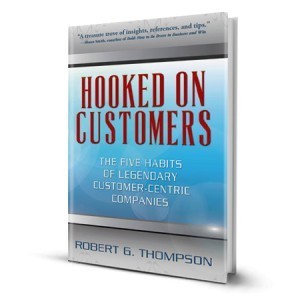 Join the Launch! June – 13, 2014
Join the Launch! June – 13, 2014We’re excited about being a part of Bob’s book launch team, and it’s time to give you the opportunity to get to know him better and participate in building the buzz this June. If you are interested in being involved in the promotion of Hooked on Customers - including interviewing Bob, receiving a guest post, or reviewing the book – please take a minute fill out THIS FORM. As we get closer to the launch, someone from our team will be in touch with additional information and promotion materials.
Ready to start promoting now? Go ahead and Send This Tweet!
I’m excited about building the buzz for #HookedOnCustomers by @Bob_Thompson! http://bit.ly/HOC_Amazon
April 30, 2014
4 Ways to Make Anything Easy
Midway through the marathon course (26.2 miles), I found myself at the top of what felt like the largest elevation increase on the course, not a BIG hill, but a hill nonetheless.
Up that steady incline, I ran with Kate, a woman I met at mile 1 and waved on to run at her own pace. Kate, also a first time marathoner, chatted happily and waved back to me as the distance between us grew. Soon, I couldn’t even see her up ahead.
When I met up with her again at mile 17, we talked awhile and kept pace for a few miles. We faced the wind together and parted ways at the top of the hill.
Sharon waited for me at mile 19.
“You look great,” she said. “You make it look easy.”
And I did feel great. I was running with relative ease and, more importantly, I’d been running steadily — sticking to my plan, feeling strong. When Sharon jumped on the course to keep me company through the last 7 miles, I felt grateful for her friendship and company but didn’t need her, as I’d expected to, to help me power through to the end of the race.
In the early miles, I ran alone, watching a stream of people pass me as I purposefully slowed my pace. Nearing the last third of the race, I started passing people instead, because I kept running when others walked, maintained my pace when others lagged.
Somewhere along the line, someone gave me this advice about completing the marathon: trust your training.
If you train well, any task can be easy.
My 7 year old daughter Maggie is in first grade. She loves math. She thinks multiplication is easy. Why? She’s practiced, studied, and reviewed her basic facts enough that they are automatic.
I think getting up at 5 am is easy. I’ve done it for so long and so consistently that it is like second nature. No alarm clock needed. I just get up.
I think blogging is easy. I’ve blogged for over five years and, though I may not be the best or most read blogger, I can handle the technical aspects of posting to my blog effortlessly and can generate ideas and write copy without stress.
Any task repeated, with practice and discipline, becomes easier.
Training for the marathon was not easy. I had a disciplined regime of runs during the week and I ran one long run, increasing in distance, on the weekends.
During my training, I completed a 15.5 mile training race that felt far more difficult than the marathon itself. I felt like quitting. I felt discouraged. I even considered trashing the whole idea of the marathon when, after the run, I felt nauseous and depleted. Later, I realized that I let the excitement of the day propel me to a far-too-ambitious pace. I didn’t have any fuel, so I felt my stomach growl through the race and ended the race with low blood sugar. That 15.5 mile training run was really HARD.
That training run helped me see that I need to start more slowly and fuel regularly. I trained myself to know how to run at a slower pace and when to refuel with energy chews.
I trained myself to be mentally strong. I focused on positive thoughts. I chose to view every mile of the race as a gift.
One foot in front of the other, I ran. One mile after the other.
It was not effortless, but it was relatively easy. Far easier than I had expected.
Here is how you can make anything, even a 26.2 mile run, easy:
Do the work. Whatever you hope to accomplish will require hard work and training. That part is never easy. However, if you do the work, with repeated practice and training, that big thing, whatever it is, will become easier.
Mentally prepare. I ran a 5K race with my oldest daughter last year. From nearly the first step, she expressed her doubts about her ability to run. If you allow yourself to dwell on negative thoughts, complaining and doubting, your tasks will become exponentially more difficult. Choose instead to focus on your strengths and abilities, with ruthless determination, and your mental strength will propel you to accomplish what you once thought impossible.
Learn from your training. Training is not easy. It is very hard work. Along the way, you will learn important lessons about yourself that can help you become better. As you apply those lessons, you can adjust your approach and improve so that when your big day comes, you will be better equipped for whatever you face.
Run your own race. I am not a super fast runner and I don’t have to be. Running a marathon at my own perfect pace was relatively easy. If I had tried to run much faster, I would have had a very difficult time. Whatever you hope to achieve, it will be less burdensome if you allow yourself to run at a pace that fits your fitness and ability. I don’t try to run with the elite runners. I don’t try to stay with the fast pack. I run my miles at my own pace, in my own time.
What do you hope to achieve? If it seems difficult, remember that anything can be easy, if you train properly, mentally prepare, and approach the task with the pacing that is best for you. And when you train well, you will find that the journey is easy and joyful.
April 26, 2014
12 Hours Until I #RunToledo
Tomorrow morning, I will achieve a goal I’ve thought about for nearly 15 years.
Months before my 30th birthday, I stepped up my running and began training for a full marathon. My goal at the time was to run a marathon prior to my milestone birthday. I remember waking up before work and running nearly every day, until the morning I woke up feeling queasy and stayed in bed, instead. I put my marathon dreams on hold when I found out I was pregnant with our first child.
Now I’m almost 43 and my oldest daughter is nearly 13. I’ve run 3 half marathons in the intervening years but never run a full marathon.
I started training for this race just after Christmas and I’ve received so much encouragement and support — it’s been truly amazing.
I asked my Twitter and Facebook friends for some last minute encouragement and advice and I thought I’d share some here, to remind myself as I mentally prepare and to encourage any of you, who are training, planning, or dreaming of a marathon.
Just keep putting one foot in front of the other.
Remind yourself why you are doing it and how far you’ve come.
People succeed because they give up what they want right now in favor of what they want the most.
Completion is victory. It’s not about how fast you go. Do your best and you are a winner!
Stay hydrated and stay cool.
Go get em.
Aim high on the road…
You are lighter than air. We are wind on back!
Stick to your plan – race day adrenaline can trip people up causing them to go out too fast.
Trust your training!
When you hit those spots and need a little mental push, pick someone in front of you and make your goal simply to catch up and pass him or her. Then pick your next target…and your next target. Amazing how just having that little goal puts a little more energy when you think you have little in the tank.
Just finish. It’s okay to have a time goal, but just focus on finishing.
Feed the positive dog.
Just do it.
No one is given their destiny, you must choose your destiny.
Remember that God is your strength.
Find joy in the journey!
When it starts to hurt (and it will). When your mind starts to fatigue (and it tries to convince you to stop). Simply remember this, “Pain is temporary, pride is forever”
Run, Forrest, Run!
You can used to anything, even hangin’, if you live long enough!
The only one who can tell you “you can’t” is you, and you don’t have to listen.
You’ll burn like 30,000 calories which means you can pretty much eat what you want for a year.
One foot in front of the other.
Remember, the finish line is proof of your strength.
There are two kinds of pain in the world, sacrifice or regret. You choose.
I don’t give up when I’m tired, I give up when I’m done.
Do it for those who no longer can.
Yesterday, I got my last bit of encouragement, via a text message from my nephew: a favorite scripture.
And though I may be running my marathon on my own, I will not be alone! I am surrounded by all of you, and when I run strong, it will be with your encouragement whispering in my ears. Thank you!
P.S. Big thanks to Brian Sooy (author of Raise Your Voice) for the beautiful graphic!
April 25, 2014
Featured on Friday: 2014 Berrett-Koehler Author Event
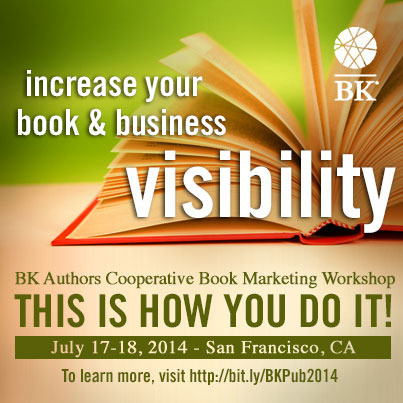
Last year I had the opportunity to travel to Atlanta for the Berrett-Koehler Book Marketing Workshop. Because the Weaving Influence team works remotely, my time in Atlanta for this event allowed me to actually work next to the “boss lady” (a.k.a. Becky Robinson) for two days, meet clients face-to-face (rather than email), and as an added bonus, sneak in a quick trip to the Dwarf House for some lemon pie.
Another bonus was the opportunity to learn from fellow authors and book marketers about the best way to promote yourself, your books, and your message. My favorite speaker (outside of Becky, of course) was Simon Bailey. Not only did he keep me in stitches, but he encouraged me to continue to make connections and set bigger goals. Just because you reach one dream doesn’t mean you need to stop looking for more.
I was also able to meet members of the Berrett-Koehler staff (pictured above, along with Becky and me), who were all equally delightful and stood ready to help and support those who were ready to take the next step in publishing. If you’re considering a publishing house for your manuscript, talk to the folks at BK.
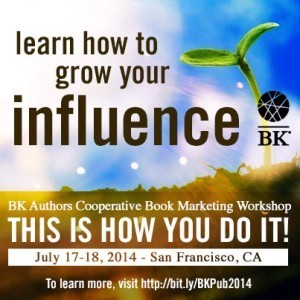 See it for yourself!
See it for yourself!July 17-18, you have the opportunity to hear from book marketing experts, authors, and leaders at the 2014 Book Marketing Worshop held in beautiful San Francisco. I would highly encourage you to sign up now and make plans to attend this important and helpful event. Take advantage of being in the presence of published authors and book marketing experts, ask questions, and plan to take notes because there’s a lot to take in in a short amount of time.
Share the Invitation
What could be better than attending this event? Attending it with a friend! Pick up the phone or send an email to a friend or colleague who has been talking about writing a book for far too long. Invite them to join you in San Francisco as the first step towards making their book dream a reality. If you want to invite your online connections there are graphics to use, tweets to send, and ideas for spreading the word – all found HERE. Check it out today!
Don’t Forget:
Register
Share
I won’t be able to attend the event this year, but I hope to hear from many of you who did, and I’m grateful for the opportunity to have attended last year.
You Tell Me! Have you been to a BK Marketing Event before? What did you enjoy the most?
April 22, 2014
Taking on the Influencer Myth
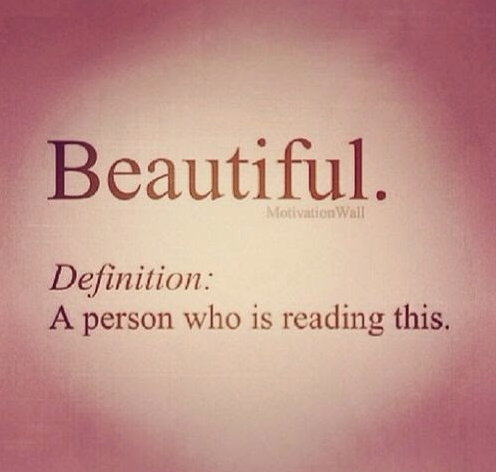
Today’s guest post comes from Charlotte Ashlock. She shares a lot of wisdom here, well worth your time to read! Thanks, Charlotte!
The Influencer Myth, Part One: Getting the attention of an influential celebrity is the recipe for instant fame (no hard work necessary!) I keep reading blogs for social media beginners that tell them to “court influencers.” The blogs promise this is the quickest, most efficient way to achieve social media success.
The advice goes like this: when people see the famous folks talking to you, they’ll start following you in swarms! You will magically soar to join the ranks of the high and mighty. All your discoverability problems will be solved. There’s only one problem with this advice: it couldn’t be more wrong.
I’ve talked to celebrities on Twitter a few times now, and I’ve carefully monitored my follower count after each one of those conversations. My conclusion? I’ve never had a celebrity conversation that perceptibly moves the needle. The effect on my follower count is not just low, but nil.
The Influencer Myth, Part Two: The best way to get celebrity attention is to barrage them with compliments. I write many tweets that include celebrity handles, because I want my Twitter friends to follow and admire the same people that I look up to. Given that this is my purpose, the vast majority of my tweets @ celebrities are complimentary.
Having the celebrity tweet back is not all that common, but it happens sometimes. Study my four “celebrity encounters” and see if you notice any common elements between them.
ELIZABETH GILBERT is the best-selling author of Eat, Pray, Love. (If you’ve never seen her inspirational TED talk on the nature of genius, I highly recommend it.)
JON MORROW is like the Stephen Hawking of blogging— he’s had tremendous professional success despite suffering from a disabling disease. I’m a huge fan of his writing, so I’ve made many complimentary tweets about his articles. However, this is the only time he’s ever replied to me:
MARGARET ATWOOD is a famous dystopian feminist Canadian fiction writer. She also happened to be the commencement speaker at my college graduation.
(Lest you think I am being too hard on Margaret, she told us we should prepare for a future of total climate disaster with “the haves warring against the have-nots.” Then our college president Leon Botstein took the podium and told us nobody would want our liberal arts degrees in the bad economy. Thankfully, the college provided bottles of free wine to help us wash down the bad news.
PBS IDEA CHANNEL is a YouTube show with over 500,000 subscribers that examines the connections between pop culture, technology and art. The host is quite witty and insightful, and will analyze everything from Jurassic Park to zombies, with the thoughtfulness of a brilliant English major analyzing Shakespeare.
PBS Idea Channel is famous in the YouTube community for the thoughtful way it engages subscribers, and loves to put audience comments up on the screen. So when it released the episode we were chatting about, it put my tweet up on the screen in big letters! The episode is about the Internet’s dark side— the experience of being trolled— and my tweet is shown at the 7 minute and 24 second mark.
So what do all four “celebrity encounters” have in common? In every single case, I was sharing not a compliment, but a criticism. Respectful, thoughtful criticism tends to get a reply— whereas praise really won’t stand out from the wash of feedback the celebrities are receiving.
My coworker Jeevan uses the same strategy in his editorial work. In the publishing industry, we frequently have situations where several publishing houses are competing to acquire a famous author’s book. In those cases, Jeevan will send the bigwig, a frank, honest critique of their work— highlighting all the problems and flaws with their book. The refreshing honesty catches the author’s attention, and more often than not, secures the deal for Berrett-Koehler Publishers.
The strategies that you use in real-life social interactions work in social media and vice versa. In fact, mos of my social media advice boils down to just one simple fact: Social media skills and just plain SOCIAL skills are not different from each other. People are learning social media “from scratch”… when actually all they need to do is apply the social intelligence they use in real-life situations.
Which brings me too….
Has the advice to “court influencers” ever come up in your “real” social life (outside of social media?) I can almost guarantee it has— and I can even tell you the time— high school. In high school, my peers told me my best route to popularity was waiting attendance on the “popular” girls. If I praised them and complimented them, they would embrace me in their circle of popularity.
I disdained this advice— because I could see it was, well, false. The girls who sucked up to the popular girls didn’t become alphas themselves— they were betas. Rather than play the game of social class in the context of high school, I just looked around for people who had common interests with me.
I looked for creative people, intelligent people, people who loved books. I didn’t care whether they sat at the exulted cafeteria tables, or the humble ones. I didn’t care if I was their only friend or if they had a hundred friends. I couldn’t care less if they bore any of those markers of high school stigma: nerd, fat, wiccan, goth, weird, gay, you know the words. I didn’t care if anyone made fun of me for hanging out with them. The only thing I cared about was whether they treated me decently and had something interesting to say.
Which brings me to….
If I don’t get my Twitter followers by hobnobbing with the celebrities, how DO I get them? I get my Twitter followers using exactly the same social strategy I used in high school. I’m not re-inventing the wheel, I’m just using that same old personality I’ve always had. I look for intelligent, creative, bookish people. I play games of imagination, I engage in spirited debate, and I return kindness with kindness. I’ve been embraced by many Twitter communities, most notably the indie author Twitter community— see my list of Creative Writers here.
Speaking of games of imagination: if you have some time next Friday, drop by our weekly Twitter microfiction party, it takes place on hashtag #FP (stands for Friday Phrases.) Yes, stories CAN be written using only 140 characters, and some of them are pretty good. (And by the way, I notice an increase in my follower count every time I participate in #FP.)
But follower count isn’t even the right thing to be watching. Instead, you should ask yourself, “Am I furthering my personal and professional goals? Am I having fun? Do I love my new friends?” And how do you accomplish these things? The same way you’ve always accomplished them, with or without social media. There is no right or wrong style. There is only YOUR style— or else you, trying to be something you’re not.
Trust me: there’s no need to pretend to be somebody you’re not. Who you actually are is the most beautiful.
 Image source: Google+
Image source: Google+
 About the Author: Charlotte Ashlock is a Digital Producer and Editor for Berrett-Koehler Publishers, which produces nonfiction books about making better organizations, societies, and lives. Say hi to her on Twitter, especially if you have ideas for the book you think Becky Robinson, founder of the Weaving Influence publicity company, should write.
About the Author: Charlotte Ashlock is a Digital Producer and Editor for Berrett-Koehler Publishers, which produces nonfiction books about making better organizations, societies, and lives. Say hi to her on Twitter, especially if you have ideas for the book you think Becky Robinson, founder of the Weaving Influence publicity company, should write.
April 18, 2014
Featured on Friday: Brian Sooy

It’s Good Friday, and I don’t know what that means in your home or place of business, but around here it means that we’re celebrating with a big family meal on Easter Sunday.
It also means that as individuals, we’re taking time to think about what this holiday means to us, and reflect on how we can make a difference in the world around us. That’s not too far off from what today’s author is focused on, making a difference in the nonprofit world by helping messages match the mission of the organization.
Meet Brian Sooy
 Brian is the founder and design director of Aespire®, a design and marketing communications agency that works with nonprofits, foundations, and other meaningful causes. He spends time speaking and consulting with professionals and leaders from mission-driven organizations, advising them on positioning, marketing, and communications principles that help them connect their purpose and mission with their audience. As a volunteer, Brian also serves on the board of directors of Second Harvest Food Bank of North Central Ohio in various capacities, including as an officer on the executive committee.
Brian is the founder and design director of Aespire®, a design and marketing communications agency that works with nonprofits, foundations, and other meaningful causes. He spends time speaking and consulting with professionals and leaders from mission-driven organizations, advising them on positioning, marketing, and communications principles that help them connect their purpose and mission with their audience. As a volunteer, Brian also serves on the board of directors of Second Harvest Food Bank of North Central Ohio in various capacities, including as an officer on the executive committee.
Based on his experience in both nonprofit advisory and volunteer roles, Brian has now written Raise Your Voice: A Cause Manifesto. In Raise Your Voice, Brian explores mission-driven design, helping those working in the nonprofit realm find touch points that are meaningful to the audience, and best represent the organization’s unique personality and distinctive voice. If you’re interested in learning more, Raise Your Voice is now available on Amazon!
Connect with Brian Online
Find ways to connect with Brian on Twitter, Google+, Facebook, LinkedIn, YouTube, and Pinterest! Don’t forget to visit his website, and bookmark the landing page for his Raise Your Voice sample chapter to share with your friends.
 Spread the Book Buzz (June 2 – 6)
Spread the Book Buzz (June 2 – 6)Although Raise Your Voice is already available for purchase, we are joining with Brian to build the book buzz during the first week of June, and we would love for you to join us! If you’ve already signed up – great! Go ahead and share some of the beautiful graphics and easy-share tweets from the resource page. Download the free sample chapter that Brian is offering, and share it with your friends. If you know someone in the nonprofit world, I would encourage you to point them towards Brian’s social media channels or contact information. That’s a lot to remember, so let’s recap:
Buy the Book
Join the Buzz Builders
Read a Sample
Tell a Friend
Happy Easter, from the Weaving Influence team!
April 16, 2014
Where Do You Find Your BEST Ideas?
Dean Schroeder and Alan Robinson, the authors of Ideas are Free, recently launched their latest title, The Idea-Driven Organization. From their extensive research with organizations around the world, they’ve discovered that 80% of the best ideas to move any organization forward will come from the front-line workers, the people who are most in touch with what customers want and need.
As the leader of a virtual company with a fairly flat structure (we are all front-line workers, interacting with clients daily), I have been exploring how to bring Schroeder and Robinson’s insights into our work. Earlier this year, I invited members of my team (check out our new team page!) to identify and implement one big idea each. Megan decided to create a new task list in Basecamp for pitching our clients to media outlets. Amy suggested we try a new tool for Twitter (commun.it), which she introduced to the team with great success. I launched a member site for our subcontractor team and have been working (slowly) to create resources and training materials for onboarding new subcontractors.
The one thing I missed in encouraging implementation of these new ideas?
I failed to add structure to the process and follow through to see more ideas generated and implemented.
As Schroeder and Robinson noted in their book, “Leaders can only be as good as the structures and systems they set up to govern the way their organizations work.” Tweet this. This is true for a company of one, a company of 30, or a company of thousands.
If I want my team members to identify and implement ideas to improve our services to clients, I need to create structures and systems that encourage and provide follow-up for idea initiatives.
When I do, we will create and implement more ideas.
Tell me something! What systems have you created within your organization to encourage the implementation of ideas from front-line workers? Where do you find your best ideas? What action will you to become an Idea-Driven organization?
If you haven’t already, I encourage you to check out The Idea-Driven Organization. You can find great content from the authors on their website and you can learn from them by watching my webinar with them.
April 11, 2014
Featured on Friday: #BuzzBuilder Chat

We’re just coming off a big book launch week for #LessonsFromChina by @BeauSides, and once again Team Buzz Builder has come through on promotion, posts, reviews, and more. I could say “Thank You” a thousand times and it still wouldn’t be adequate to express our appreciation for the multitude of ways that this incredible group of people get behind each launch and push us to success. Team Buzz Builder – YOU are amazing!
This week I’m turning the Featured on Friday spotlight toward two of our amazing TBB crew, and they, in turn, were gracious enough to respond to my questions and share a little bit about why they think it’s worth their time to participate. Haven’t signed up yet for TBB? You may want to after you read what John and Chantal have to say!
Meet John Smith
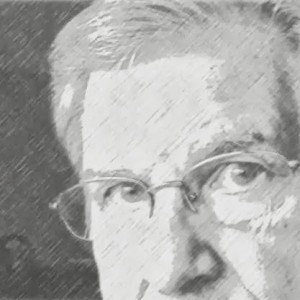 You can find John blogging over at The Strategic Learner, and connect with him on Facebook, LinkedIn, Google+, Tumblr, and Twitter.
You can find John blogging over at The Strategic Learner, and connect with him on Facebook, LinkedIn, Google+, Tumblr, and Twitter.
John, what made you decide to join TBB?
Becky Robinson’s reputation for creating opportunities to engage in activities that make a difference was the original “hook” for me. I had seen her work and her thinking in earlier roles and really felt like anything Becky was doing would be worthwhile for me.
I was also immediately impressed with the caliber of the authors and the value of the titles that she was including in the flow. The quality started high and has just become more so as we have grown. The opportunity to read, review, and promote books is common … I get requests regularly to do so from other groups and individual authors. I choose to put my primary effort into TBB launches. I consider my time and energy most well spent with TBB.
What value would you say you receive from being a member of TBB?
On a personal level, I enjoy the association with enthusiastic and thoughtful folks, both those writing the books and those working to get the books in front of people. When you have great products, marketing and promoting is easy and enjoyable. In short, I enjoy the association with quality and progressive leadership.
Speaking of quality, I am blown away by the quality and quantity of support materials that are available to us to help promote the authors and their titles. I have not seen anything like this level of support anywhere else.
Why would you recommend that others sign up?
Being part of these book launches allows you to focus energy on things that matter in concert with other people who want to make a difference, to be an active part of the positive change in leadership and organizational development that is happening now, and because you get free books. 
What’s your favorite thing about being a part of TBB?
The culture of this group is positive, spirit-filled, and fun. I feel totally comfortable and engaged whenever I am participating in the launches.
Meet Chantal Bechervaise
 You can find Chantal blogging at Take It Personel-ly, and connect with her on Twitter, Google+, and LinkedIn.
You can find Chantal blogging at Take It Personel-ly, and connect with her on Twitter, Google+, and LinkedIn.
What made you decide to join TBB, Chantal?
I decided to join TBB because I love reading books on leadership. I also decided to joing because I enjoy Weaving Influence’s blog and presence on twitter.
What value would you say you receive from being a member of TBB?
The value I receive is enormous. Besides being able to read the great books offered by TBB on leadership, I have also had the pleasure of connecting with some fantastic authors. I don’t think that I would have had the same opportunity to connect with such wonderful people and host guest blogs without TBB. I have also learned so much from the books that I have read through TBB and find they add value to me every day at work and even at home.
Would you recommend that others sign up to be a part of Team Buzz Builder?
DEFINITELY!! 
What’s your favorite thing about being a part of TBB?
Becky and the whole team at Weaving Influence are so nice and professional. They really care about the authors that they promote and they are wonderful to work with. You can feel their enthusiasm through the email communications and webinars that they host. AND it’s lots of fun too!
Ready to join John, Chantal, and a host of other Buzz Builders?
We’ve got more launches coming up, supporting authors like Linda Freeman, Brian Sooy, and Bob Thompson. One way to become a part of these launches is by signing up to help, but the easiest way to get in on the ground floor of any book launch is by signing up to become a part of Team Buzz Builder. We try to keep emails to a minimum because we know you are busy and your inboxes, like our own, are full, so you won’t be swamped with notifications.
As a part of the team, you’ll have opportunities to receive preview copies of new books, share in our promotional weeks, receive guest blog posts, and interview authors and thought-leaders for articles, posts, and blog-talk radio. What are you waiting for?
Sign up today !
April 10, 2014
On Fuel and Pacing
In 17 days, I am going to run my first marathon.
About 3 weeks ago, I ran a 15.5 mile training run with a friend. When we finished, I felt awful. I went home whining to my husband and told him I didn’t see how I would ever finish the race. He didn’t like that, so I revised my refrain and began saying “I will finish this marathon but it will be very hard.”
I’ve plodded through my training since then, with a few modifications to my fueling and pacing.
When I ran the 15.5 miles, I took water at every stop, but I didn’t have any fuel at all. My stomach felt empty and I felt hungry. And, my friend and I ran at a faster-than-normal pace (for me) during the first 10 miles or so of the run. The last 3 stretched on interminably and I had little energy to continue.
So in recent training runs (18 miles two weeks ago and 22 last Saturday), I used fuel (I prefer GU Chomps) and I paid careful attention to my pace, running much more conservatively and slowly.
The result? I felt actually quite good after running 22 miles. I picked up the pace in the last mile. I found myself considering the possibility of more marathons after this first one. I finished strong with a sense of hope and strength in considering race day. I created a new refrain: “I am strong enough to run steadily and finish this race.”
If you’re not a runner and you’ve stayed with me this long, here is the reward: In building a business, fuel and pacing are critical.
If you go out too fast, you may deplete your energy and lose hope.
If you neglect opportunities to refuel, you will weaken.
Your pace will slow. The miles will be more difficult and you may despair at continuing.
If you want to build your business long term, you must learn to choose a sustainable pace. You must have a plan to re-energize and nurture yourself. If you don’t, you will not finish what you’ve begun.
Some questions to consider:
How do you refuel for the great work you want to do in the world?
How do you create a sustainable pace, one that will carry you through the long miles ahead?
How will you nurture yourself, daily?
Who reminds you that you are stronger than you think you are?
What is the refrain you are reciting about your ability to persevere? If you don’t like your refrain, how can you shift to a new one?

